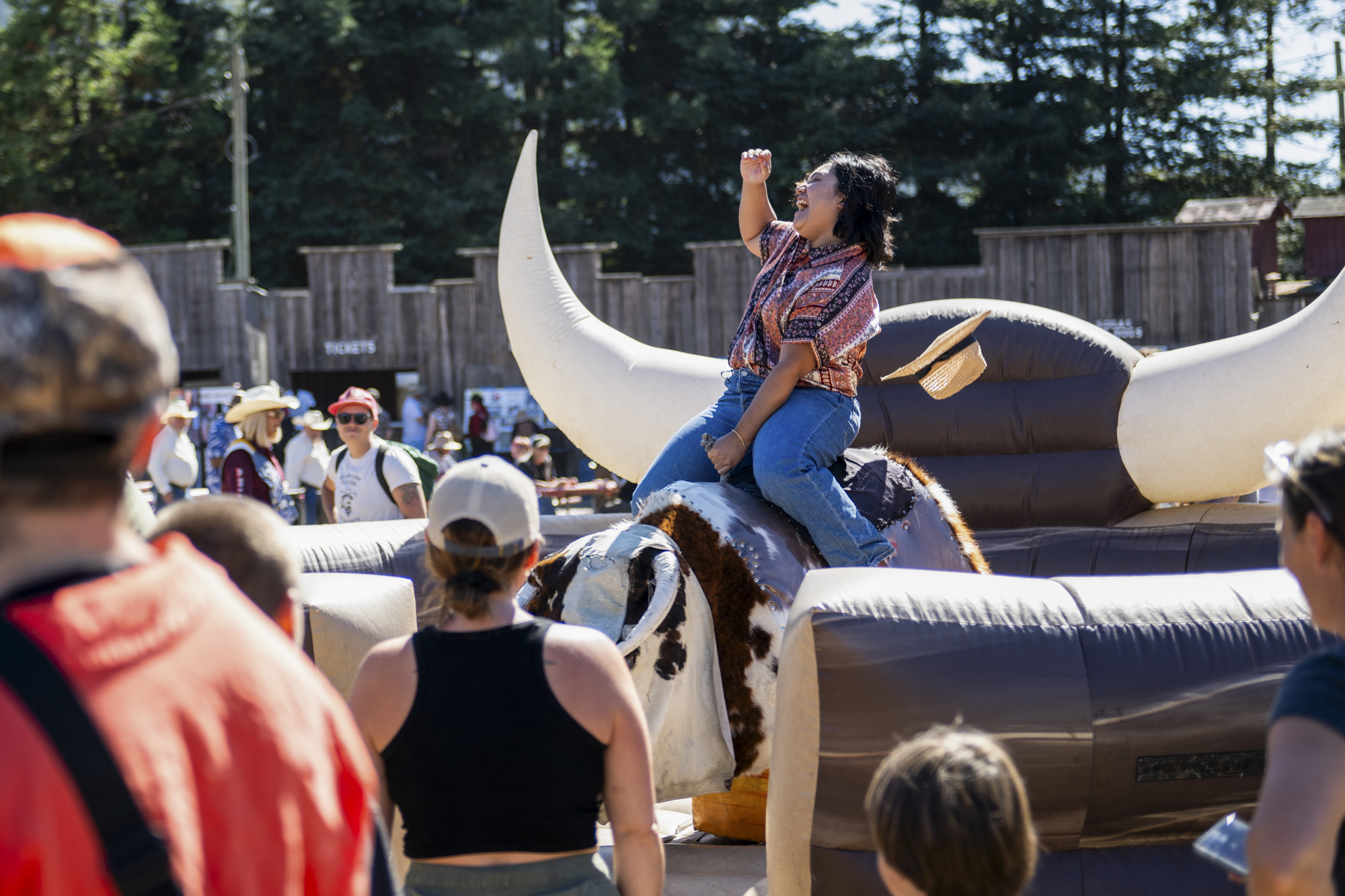Hundreds of people gathered at the Russian River Rodeo grounds in Duncans Mills over the weekend for the “Best Buck in the Bay” event, hosted by the Bay Area Chapter of the Golden State Gay Rodeo Association.
North Bay Gay Rodeo Puts Inclusivity and Showmanship in the Saddle
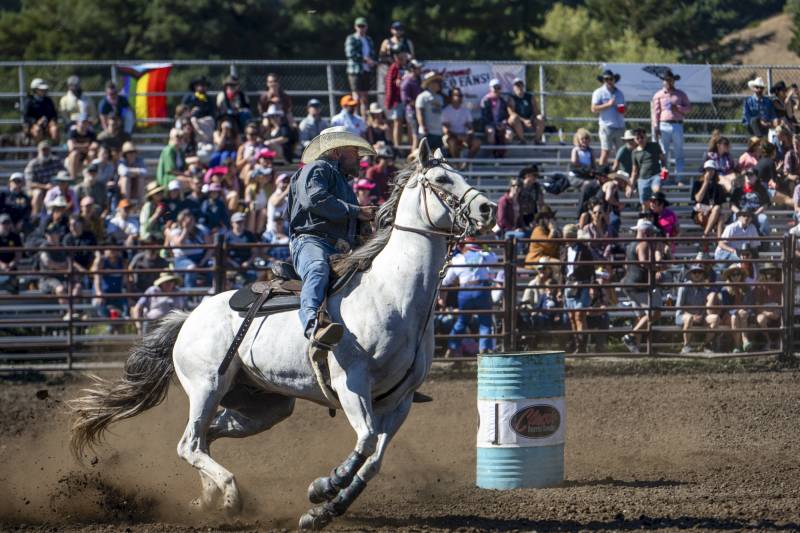
Gay rodeo differs from other rodeos, allowing anyone to participate in whatever event they choose — regardless of gender identity. Often in traditional rodeos, men ride bulls and women compete in barrel racing, an event in which a rider gallops their horse in a cloverleaf pattern around barrels, competing for the fastest time. Events at Best Buck in the Bay this year included bull riding, team roping, a barrel race and a wild drag race.
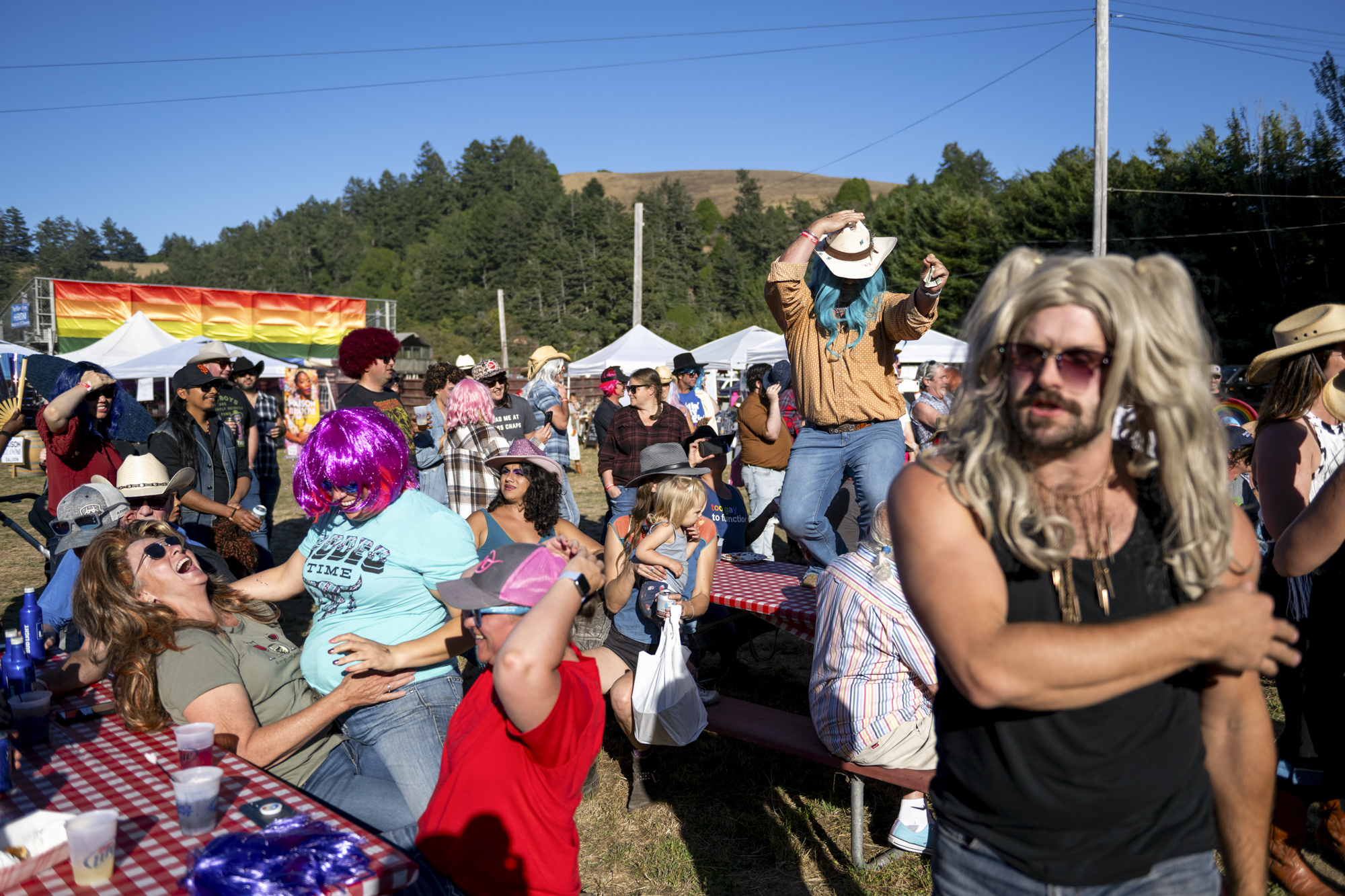

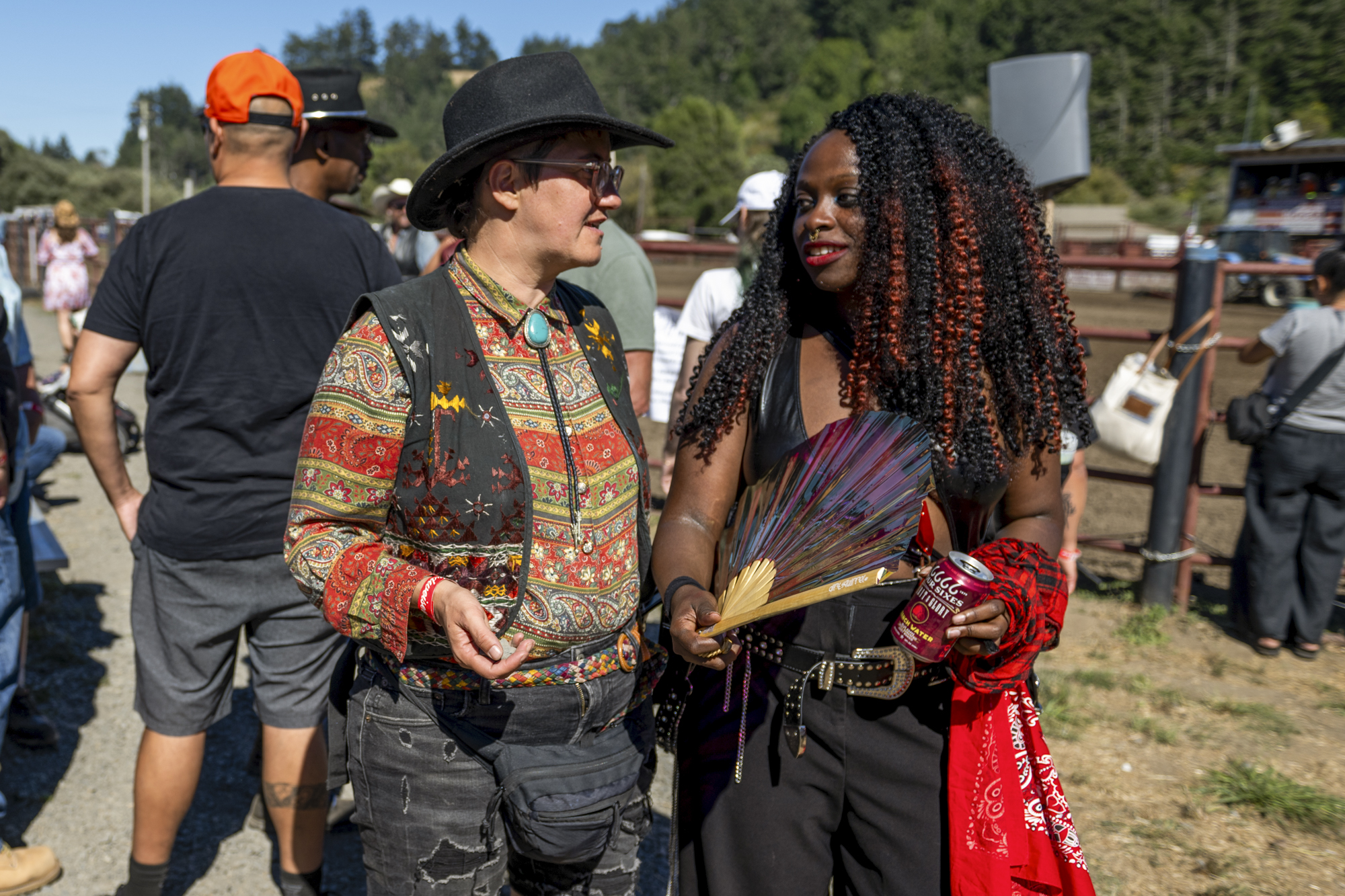
‘It’s just celebratory’
Eva Mas, who attended the rodeo with their family from San Francisco, said having events that center queerness and family is an important aspect of gay rodeo.
“With the political climate of the whole country and the whole world, it’s really important to make sure all kinds of activities are for all kinds of people,” they said. “And it’s just celebratory to be at a queer rodeo.”
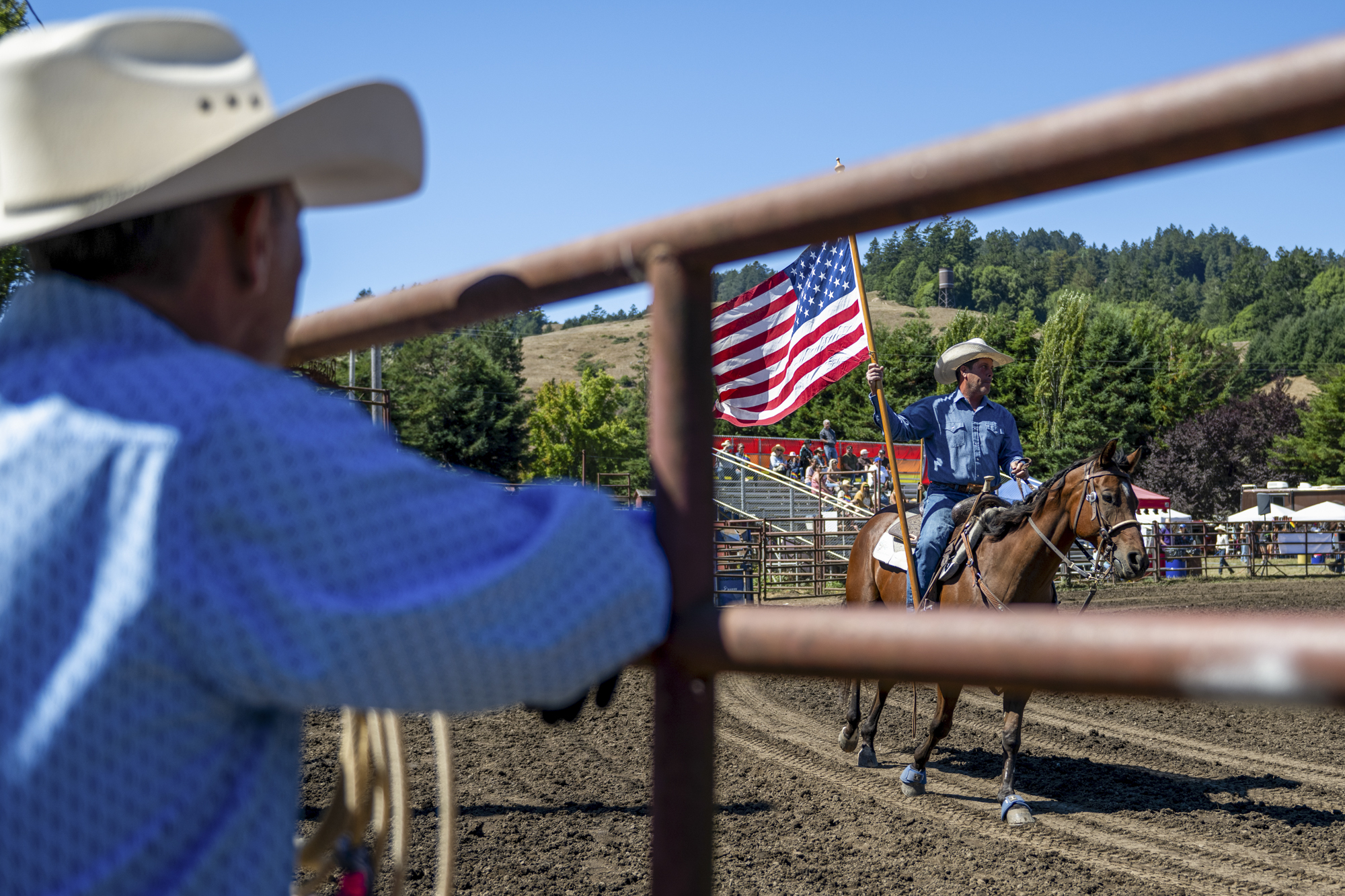

‘My life was saved by finding rodeo’
Bruce Roby, who goes by “Grumpy,” says rodeo saved his life. He said he struggled with drinking and was challenging his identity growing up in conservative southern Idaho.
“My life was saved by finding rodeo and volunteering,” he said. In 1998, after attending his first gay rodeo, he said: “I just felt like, oh, my God, I found home.” He said he’d never had so much fun in his life and will continue to volunteer in different capacities.
He’s now president of the board of the Bay Area Chapter of the GSGRA.
“You don’t have to be a card-carrying gay man or woman to come and compete, to come and enjoy the party, to come and just watch,” Roby said. “You just have to be a person with an open mind and an open heart.”
Roby said this week will mark 22 years that he’s been sober.
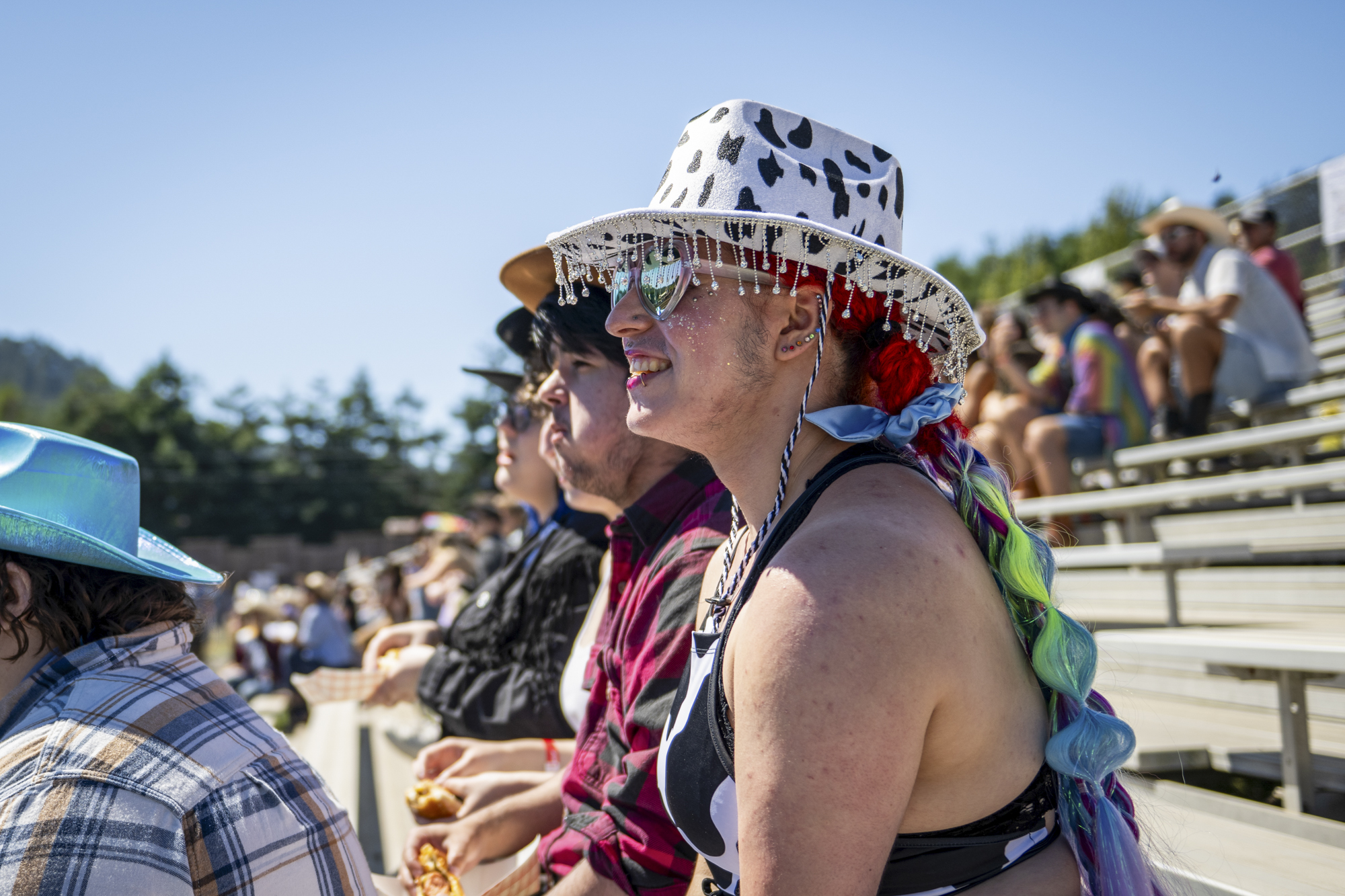

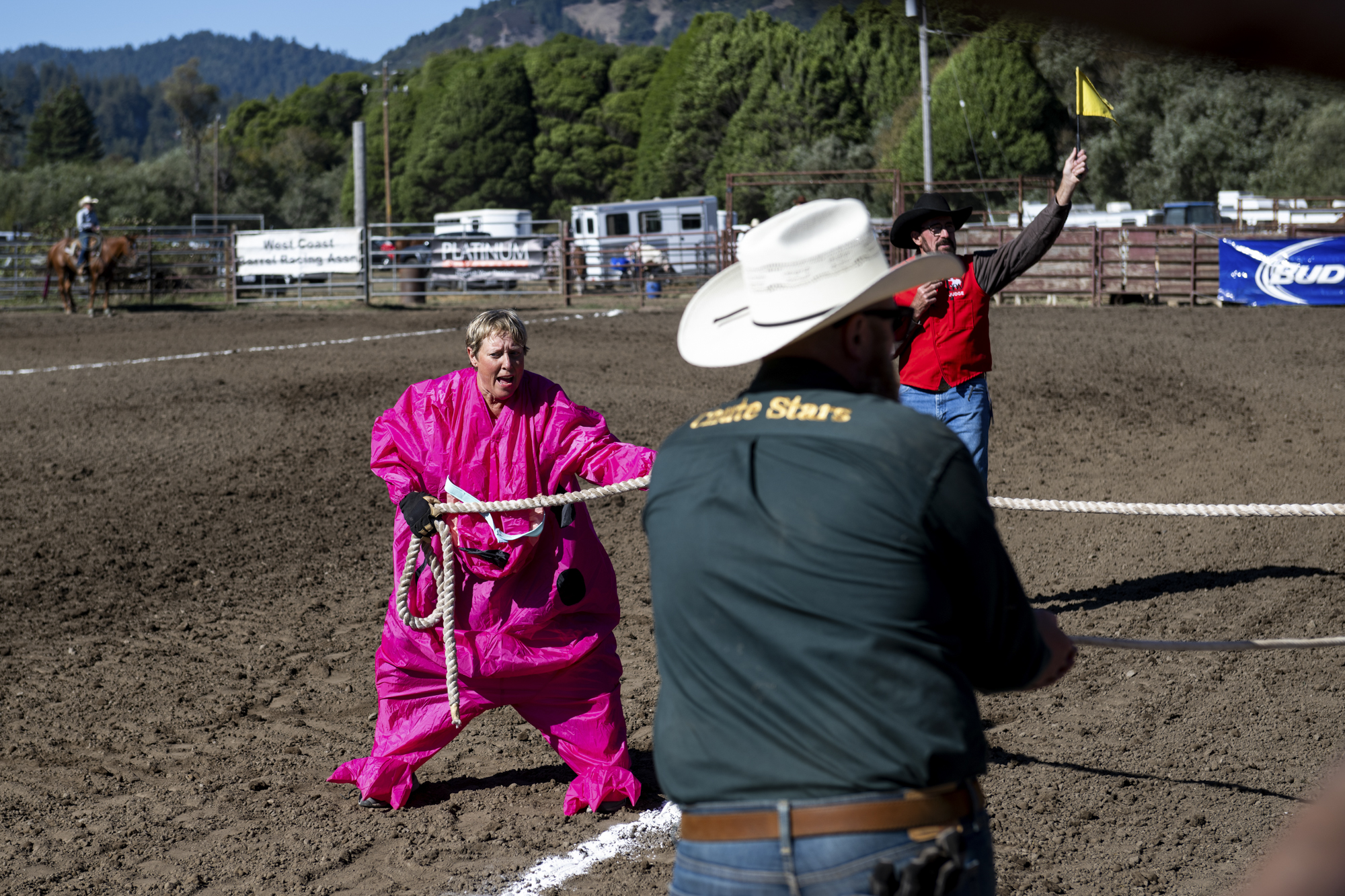
‘This is our family. This is home’
Janet Stange, who is now based in Wichita, Kansas, has been competing in the gay rodeo for the last 18 years. She competed in seven events on Saturday — including chute dogging and the Wild Drag Race. For her, the rodeo is about much more than the competition.
“This is our family. This is home,” said Stange, who met her wife at the rodeo several years ago.
Stange said rodeo is expensive and requires having passion to “be with your family and be yourself.” She goes to 12 to 14 gay rodeos a year.
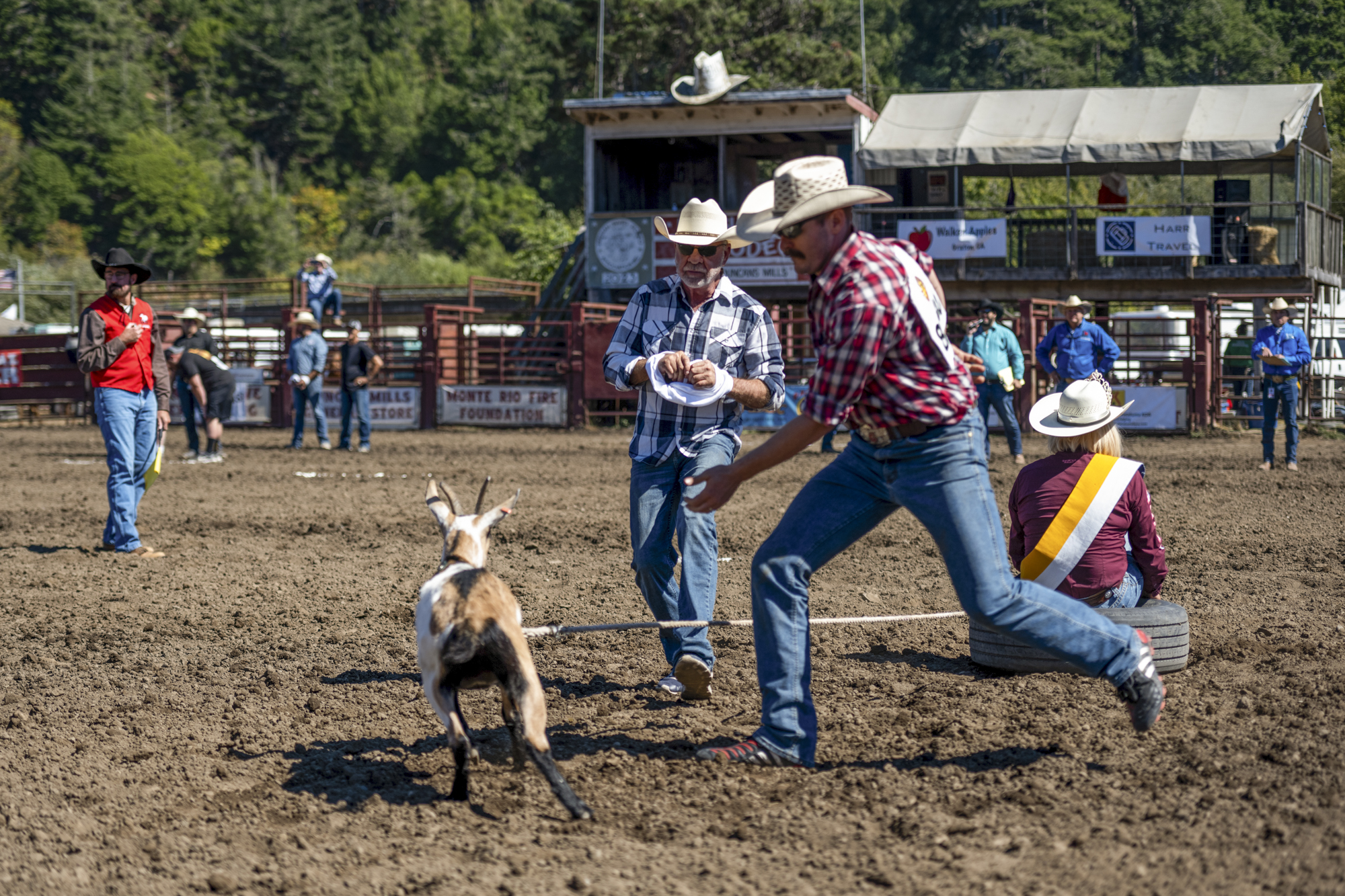

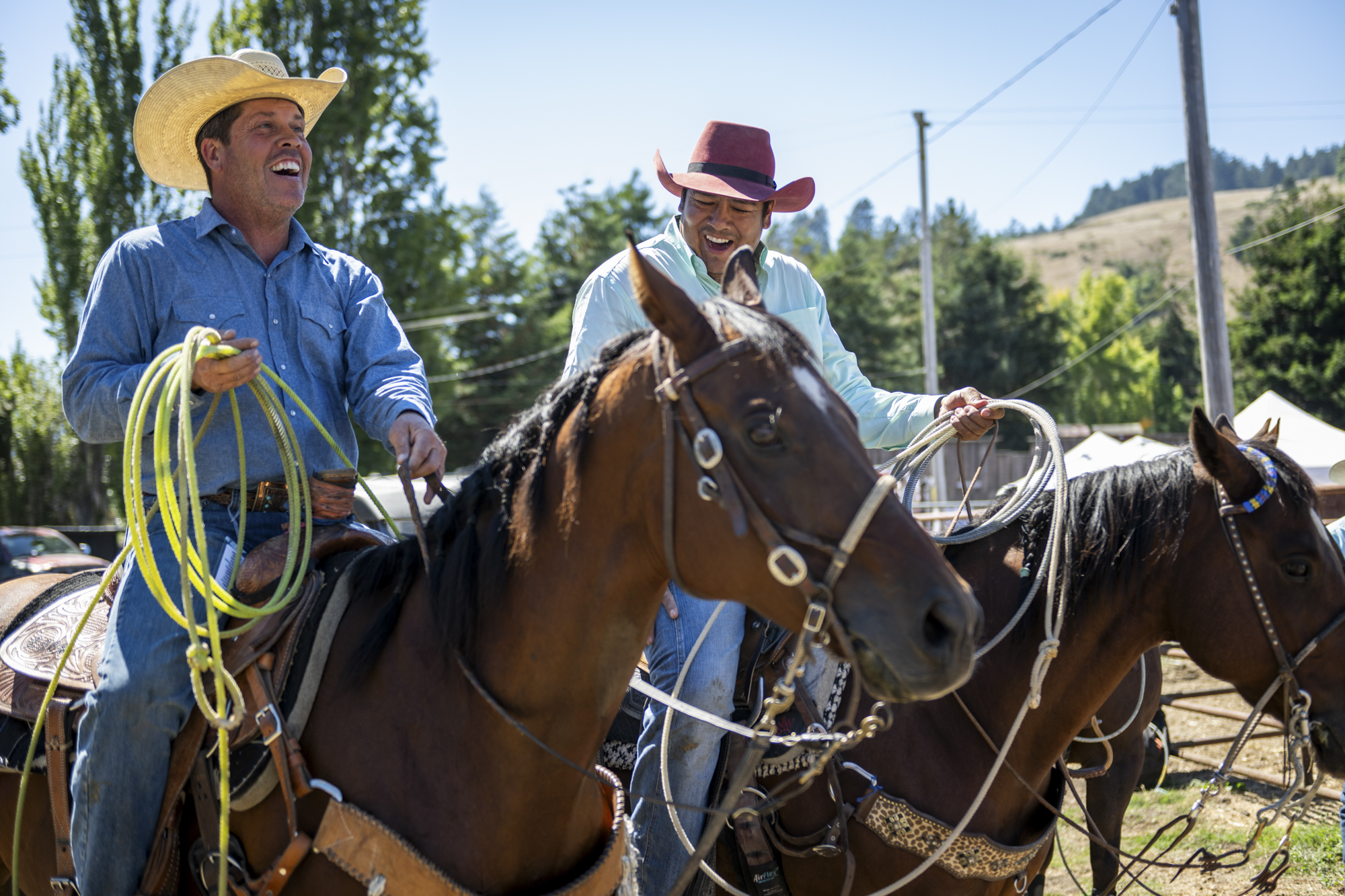
‘A safe space where we can celebrate together’
Kevin Roche is the volunteer coordinator for Best Buck in the Bay and has been involved for over a decade. He says part of the importance of gay rodeo is about representation, and that queer people are mostly invisible when it comes to tropes of country and Western media portrayals.
“This rodeo feels like a safe space where we can celebrate together,” Roche said. “It feels like a big family playing together.”
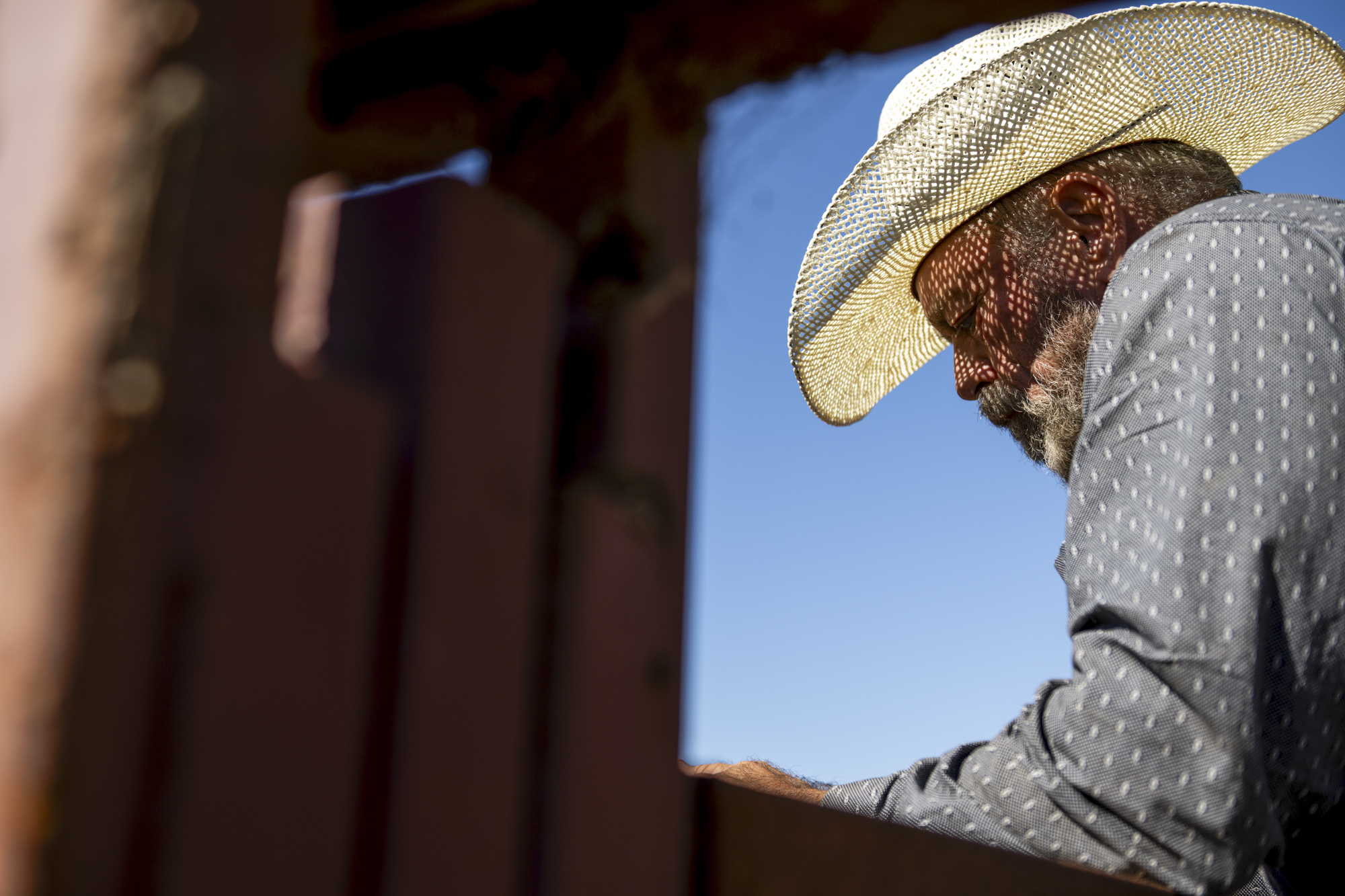
‘Nobody’s judging anybody for anything’
Chuck Browning, who lives in Phoenix, began volunteering for gay rodeos nearly 30 years ago. After about six years of volunteering, he decided to try some of the events. A friend sold him a horse and he’s been competing ever since. Browning said the culture is what keeps him coming back.
“Everybody is everybody,” he said. “Nobody’s judging anybody for anything.” He added that gay rodeos are all about charity and giving back — all the funds raised go to community organizations.
“We’ve been struggling, getting the younger generation to come out and compete with us,” he said. “We’re hopeful that we will get out there, and people will find us and more contestants will come and try it and find out that it’s awesome and love it.”
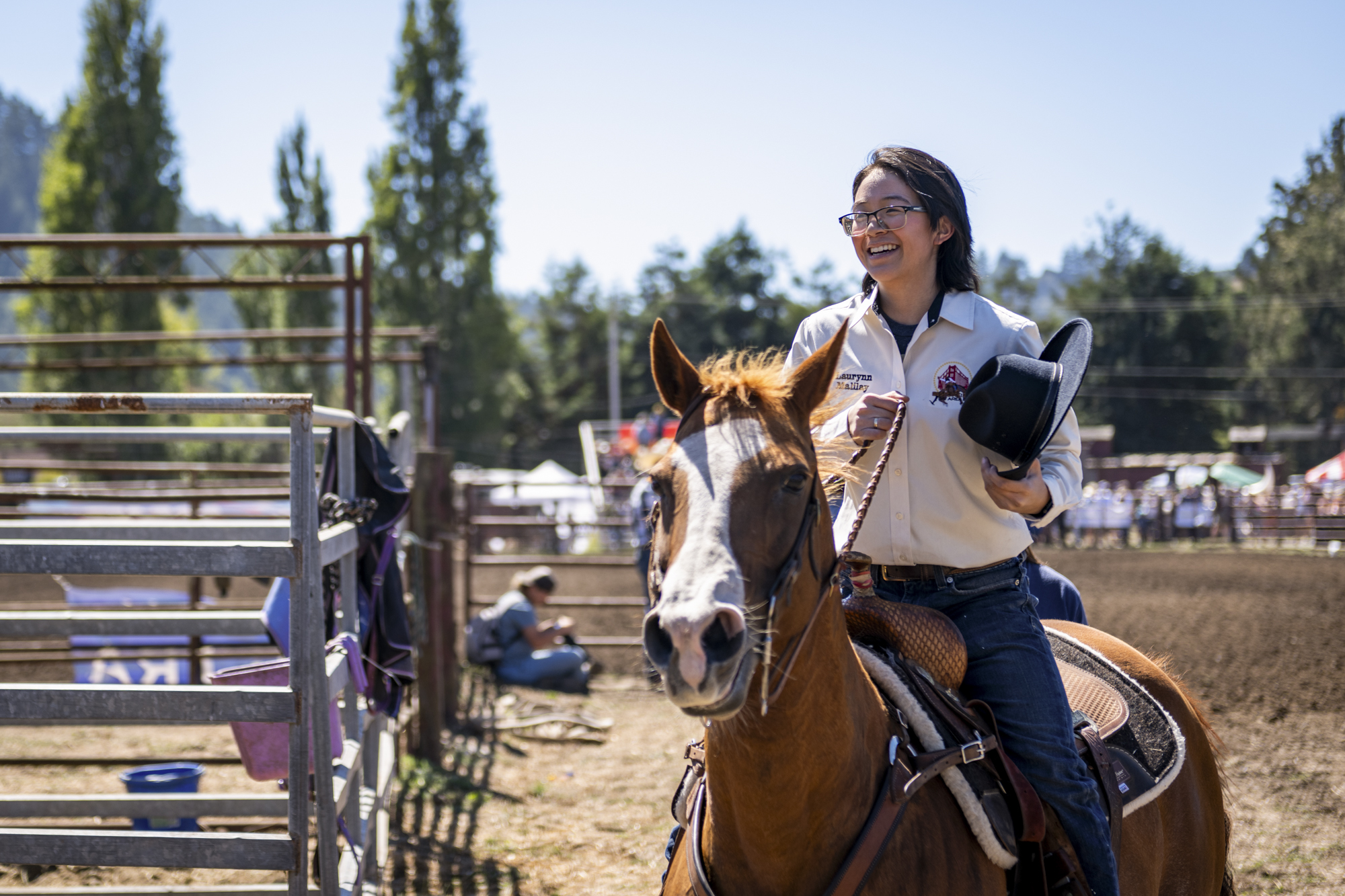

A shifting interest in rodeo participants?
Things have changed since the first gay rodeo was held nearly 50 years ago in Reno, Nevada. Some people attribute the high costs to participate and having more inclusive venues available for the LGBTQ+ community as factors. But David Lawson, who trains horses for a living, says overall that membership of the International Gay Rodeo Association — the governing body of the GSGRA — is much older. He also said membership of the GSGRA has been getting more diverse, with more women involved.
Lawson said he wants more people to know about the International Gay Rodeo Association’s existence, one of the largest organizations in the world that coordinates rodeo events around the country welcoming LGBTQ+ participants and spectators. Even though he competes in other rodeos, Lawson said gay rodeo is where he is able to combine what he enjoys.
“I want to have community with the gay community,” Lawson said. He also said he’d like to see more young people with social media skills join the association.
Roger Bergmann, president of the Gay and Lesbian Rodeo Heritage Foundation, still remembers attending his first rodeo in 1980 where around 8,000 people attended. In the past, they’d have 120 contestants in one day, but these days it is down to 33 contestants.
For Vanessa Modragon, a grad student from Santa Rosa, this was her first gay rodeo. She appreciated feeling accepted as an LGBTQ person at the event. She said with other rodeos, she hasn’t quite felt seen or able to participate.
“Being here, I can kind of combine … what I love, which is rodeos and cowboy culture and stuff, and also being myself,” she said.
